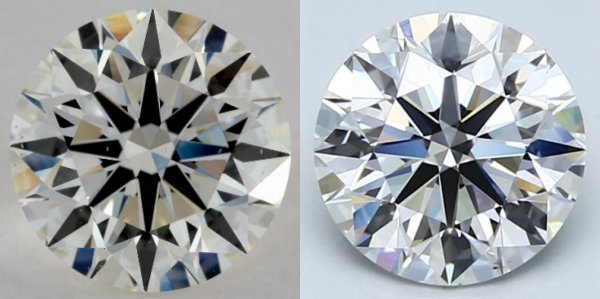
When you think of diamonds, what comes to mind? For many, it’s love, luxury, and timeless beauty. But as we dive deeper into the world of lab-grown diamonds, we uncover a fascinating interplay between culture, ethics, and innovation. Lab diamonds are not just an emerging trend; they’re redefining what diamonds mean across various cultures. Let’s explore this captivating relationship!
Understanding Lab Diamonds
What Are Lab Diamonds?
Lab diamonds, often referred to as lab-grown or synthetic diamonds, are real diamonds created in controlled environments. They possess the same physical, chemical, and optical properties as natural diamonds but are made through advanced technological processes rather than mined from the earth. These diamonds are virtually indistinguishable from their mined counterparts, making them an attractive option for many.
How Lab Diamonds Are Made
Lab diamonds are created using two primary methods: Chemical Vapor Deposition (CVD) and High-Pressure High-Temperature (HPHT).
CVD: In this method, a diamond seed is placed in a chamber filled with carbon-rich gases. The gases break down, and carbon atoms gradually deposit onto the seed, forming a diamond over time.
HPHT: This method mimics the natural conditions under which diamonds form in the earth’s mantle. High pressure and temperature are applied to carbon, causing it to crystallize into a diamond.
Both methods produce stunning gems, but they also contribute to the changing narrative around diamonds in various cultures.
Cultural Significance of Diamonds
Diamonds in Different Cultures
Diamonds have held significant cultural meanings throughout history, and these meanings vary across regions.
Western Culture: Symbol of Love and Status
In Western cultures, diamonds are synonymous with romance and luxury. The tradition of giving a diamond engagement ring began in the 19th century and has since become a hallmark of engagements. This cultural association elevates the diamond’s status as a symbol of commitment and wealth.
Eastern Cultures: Spiritual and Auspicious
In contrast, many Eastern cultures view diamonds as symbols of spiritual power and prosperity. In India, for example, diamonds are believed to bring good fortune and are often worn as part of ceremonial attire. Similarly, in Chinese culture, diamonds are associated with strength and protection, making them popular choices for auspicious gifts.
The Rise of Lab Diamonds in Various Cultures
Changing Perceptions of Lab Diamonds
As awareness of cultures and lab diamonds grows, perceptions are shifting. While some traditionalists may still prefer natural stones, many people, especially younger generations, appreciate the ethical and sustainable aspects of lab-grown diamonds.
Lab Diamonds in Wedding Traditions
In wedding traditions, lab diamonds are starting to make a name for themselves. Couples who prioritize sustainability and ethics often opt for lab-grown stones. This shift is particularly prominent in regions where environmental awareness is high, such as Scandinavia and parts of North America.
Environmental and Ethical Considerations
Sustainability in Different Cultures
The environmental impact of diamond mining has raised concerns globally. Many cultures are now embracing lab diamonds for their lower carbon footprint. For instance, in eco-conscious communities, lab diamonds are celebrated as a sustainable choice that aligns with their values.
Ethics and Consumer Choices
Ethics play a crucial role in the decision-making process for many consumers today. Lab-grown diamonds eliminate the risk of “blood diamonds”—stones that fund conflict and exploitation. This ethical clarity resonates strongly in cultures that prioritize social responsibility.
Lab Diamonds in Art and Fashion
Cultural Influences on Design
Lab diamonds are not just for jewelry; they’re making waves in the world of art and fashion. Designers are increasingly incorporating lab diamonds into their collections, influenced by cultural narratives and the desire for unique pieces. The versatility of lab diamonds allows for innovative designs that reflect diverse cultural backgrounds.
Lab Diamonds in Contemporary Art
Artists are also exploring the use of lab diamonds in their work, creating pieces that challenge traditional notions of value and beauty. This artistic exploration can help shift perceptions about lab diamonds and their place in our cultural fabric.
Global Market Trends for Lab Diamonds
Regional Preferences
As the demand for lab diamonds increases, so do the preferences across different regions. For example, while North America and Europe are seeing a rise in lab diamond popularity, other regions may still favor traditional diamonds due to longstanding cultural beliefs.
Economic Impact of Lab Diamonds
The rise of lab diamonds is impacting the diamond market economically. With lower prices and a growing consumer base, lab diamonds are reshaping the industry. This shift also opens doors for new businesses and opportunities within the diamond market.
Future of Lab Diamonds Across Cultures
Innovations in Lab Diamond Technology
As technology advances, the process of creating lab diamonds will only become more refined. Innovations may lead to even more beautiful stones with unique characteristics that cater to varying cultural tastes.
Cultural Adaptation and Acceptance
Lab diamonds will likely continue to gain acceptance in cultures that prioritize sustainability and ethical considerations. As more people learn about the benefits of lab made diamonds, we can expect a broader embrace of these gems in traditional settings and celebrations.
Conclusion: A New Era for Diamonds
Lab diamonds represent not just a shift in the jewelry industry but a broader cultural transformation. As they become more accepted across various cultures, we’re witnessing a new narrative about love, commitment, and ethics. Whether you’re drawn to lab diamonds for their beauty, affordability, or sustainability, they embody a modern choice that resonates with many values today. So, the next time you think about diamonds, consider the evolving story they tell—one that connects culture, ethics, and innovation in a beautiful way.








